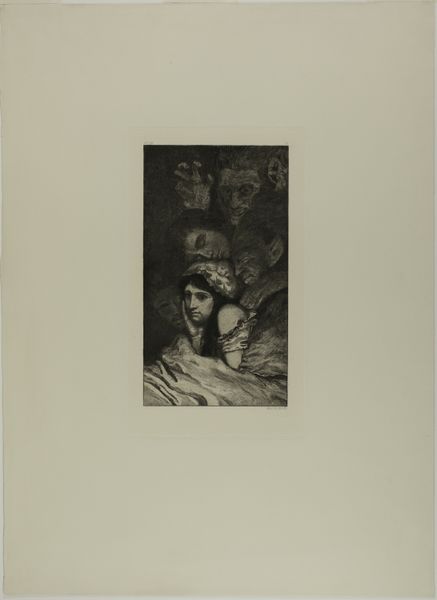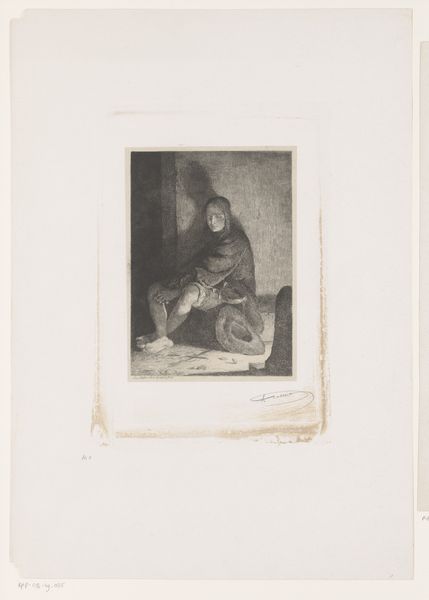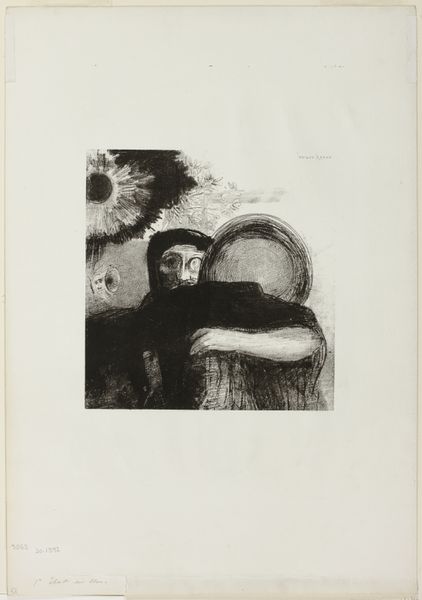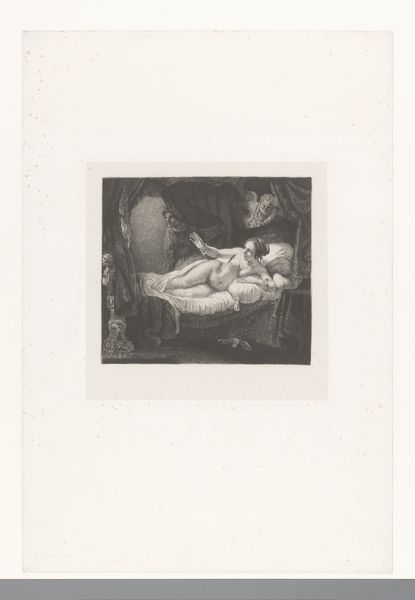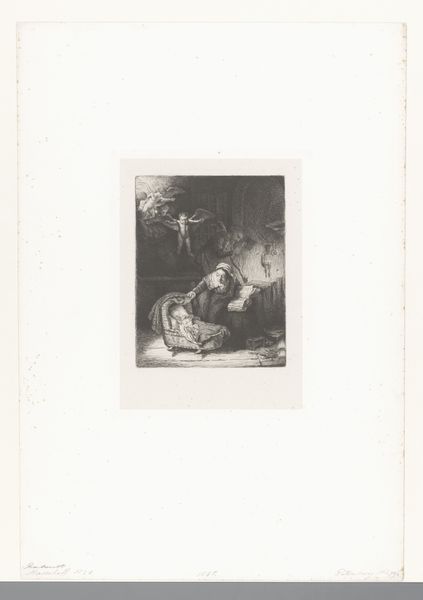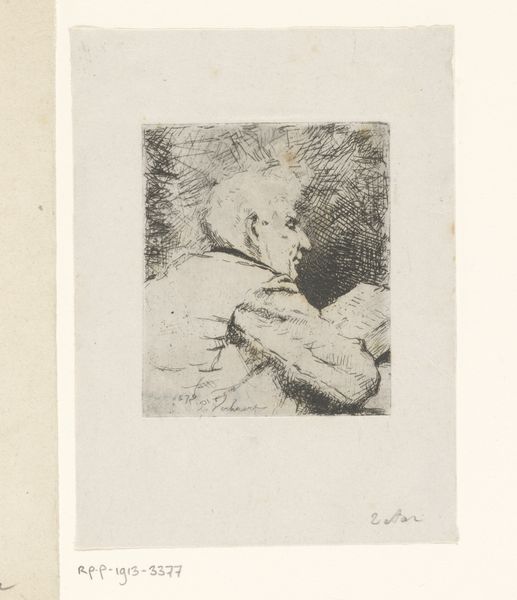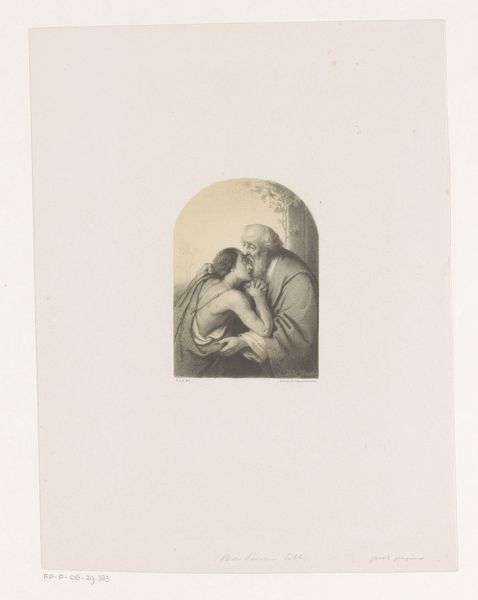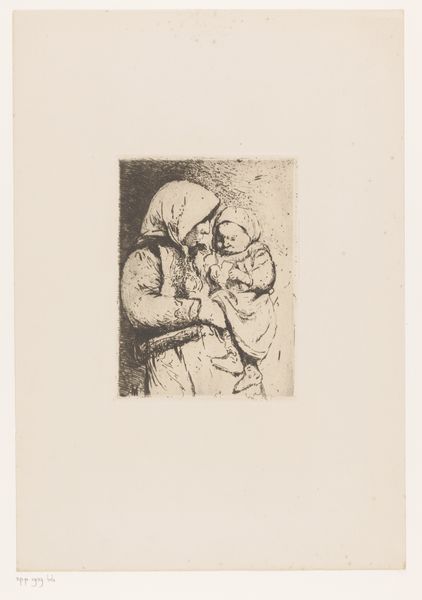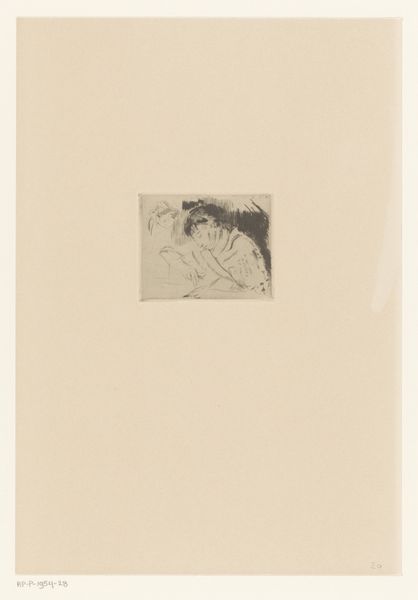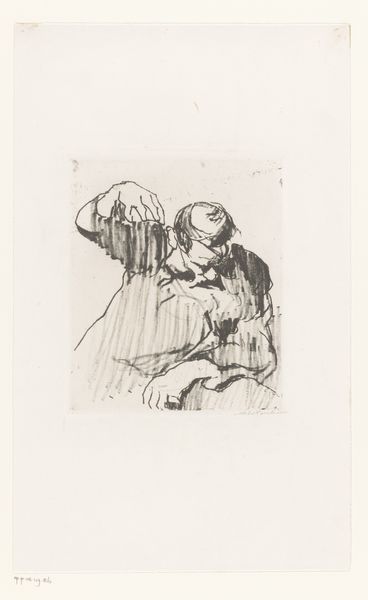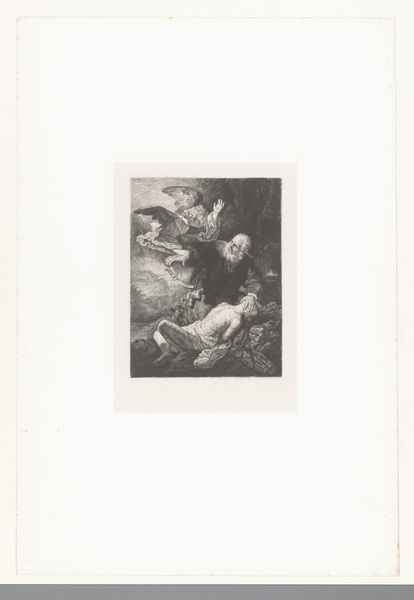
drawing, print, etching
#
portrait
#
drawing
# print
#
etching
#
figuration
#
social-realism
#
expressionism
#
monochrome
Copyright: Public Domain
Curator: This piece, created around 1910, is titled "Mother with Child in her Arms, Final Version," an etching by the celebrated German artist Käthe Kollwitz. Editor: The quiet intimacy in this is astounding. It almost feels like witnessing a secret, whispered moment. The lack of stark lines makes it gentle, but somehow burdened too, like a lullaby sung with a sob in your throat. Curator: The burdened aspect you sense is likely embedded within Kollwitz's exploration of motherhood—themes of poverty and social injustice, of course, being central to her oeuvre. Consider the etching technique itself. It allowed for a dense layering of lines, which builds this palpable sense of weight, both physical and emotional, that underscores the mother's protective embrace of the child. The gaze she gives… Editor: Yes! It’s direct but weary; the two faces are practically touching but the baby is turned, cheek pressed against the mother, avoiding eye contact and yet comforted. Perhaps this is the exhaustion that only mothers recognize. Kollwitz always seemed to find the sublime in sadness. She sees these faces; not necessarily pretty ones. Curator: Indeed, that tension speaks volumes. Formalistically, the artist manipulates tonal contrasts to focus our attention; the soft hatching around their faces illuminates their features against a dark, brooding background. Editor: See how that light pools? It’s what anchors me. The rest of the forms bleed into this almost undefined gloom. And everything is oriented with the embrace slightly off-center to the left. As viewers we want the balance that exists on the emotional level, the love, to correct what is imbalanced aesthetically. So, we linger longer than we might normally, just seeking this equilibrium. Curator: That asymmetry certainly adds to the image's dynamic quality, and our understanding. We can trace in her art and life a pre-war feeling of foreboding, or premonition, which made her stark social-realist-influenced expressionism have so much pathos. Editor: What haunts me is knowing Kollwitz was chronicling a period ripe with grief; in looking at this, a hundred years later, do we stand any closer to the source? Is anything resolved? Curator: Art rarely provides simple resolutions but maybe a profound questioning… Editor: An invitation to feel, together. Absolutely.
Comments
No comments
Be the first to comment and join the conversation on the ultimate creative platform.
